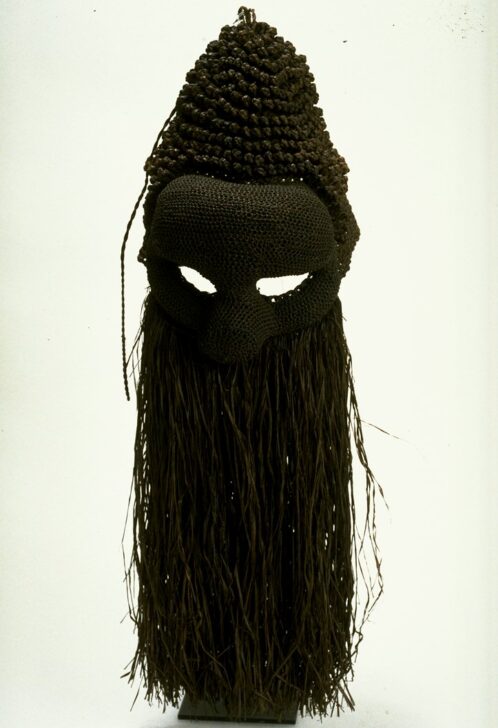Mask (idangani)
Salampasu

Description
March 28, 2009
These formidable masks played a vital role in the Sala Mpasu’s warrior society, a powerful association through which men increased their authority by securing the right to wear particular masks. The most prestigious of these were the idangani masks, which represented a married couple and were constructed entirely from fiber. The female mask is identified by the small fiber knobs that recall a popular woman’s hairstyle. The kasangu mask was made of wood and represented a warrior. Its open, rectangular mouth exposes pointed teeth—a Sala Mpasu mark of beauty.
As new forms of authority and wealth were imposed by the Belgian colonial state, the Sala Mpasu disbanded their warrior society and destroyed many of the masks associated with it. However, the resilience of Sala Mpasu artists remains evident in the new forms of masks they continue to create for entertainment, boys’ initiation ceremonies, and the external art market.
Subject Matter:
In pre-colonial Sala Mpasu society authority was vested in members of the Matambu warriors’ society who could secure the rights to wear an array of important masks. The most prestigious of these were the idangani, made entirely of woven fiber. These masks represented a husband and wife pair. This mask is female, identified by small fiber knobs that recall a popular woman’s hairstyle.
Physical Description:
Mask is made entirely of blackish-brown dyed and molded raffia fiber; face has bulging forehead, deeo set narrow eyes, bulbous nose, and raffia “beard.” Top of head has cone-like crest of small fiber knots.
Usage Rights:
If you are interested in using an image for a publication, please visit https://umma.umich.edu/request-image/ for more information and to fill out the online Image Rights and Reproductions Request Form.